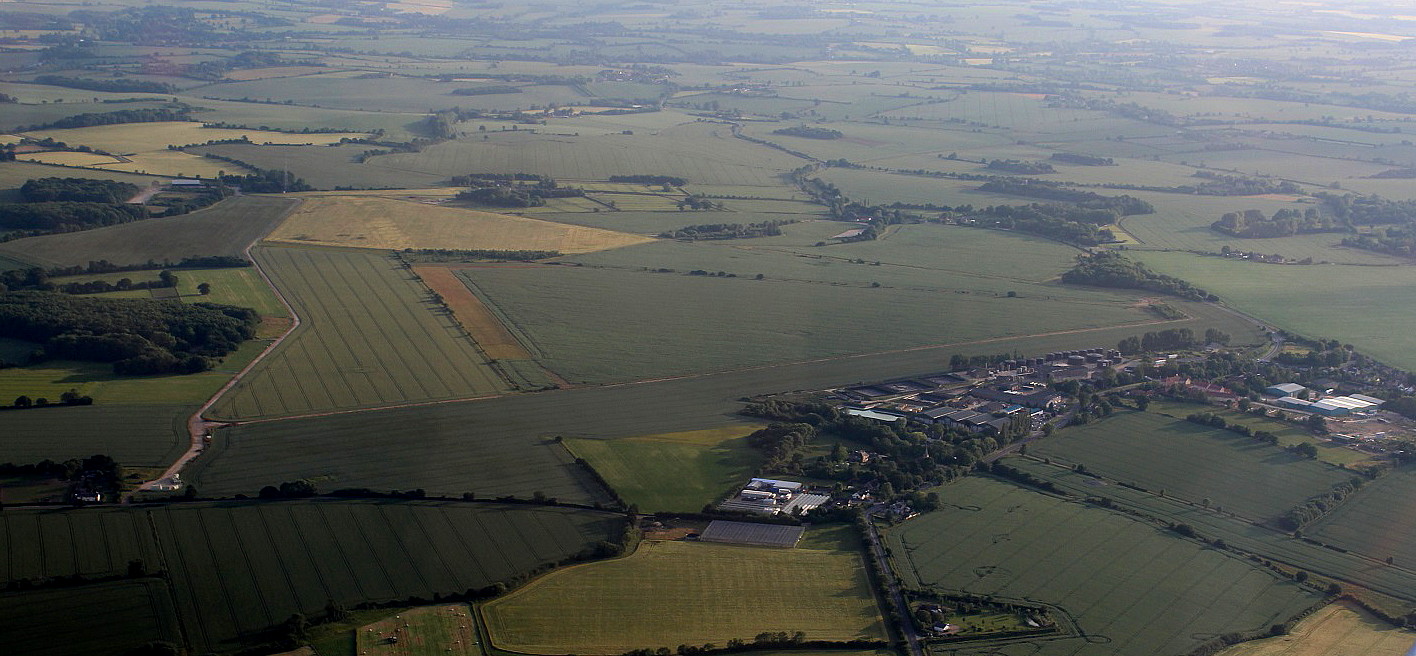Chedburgh
CHEDBURGH: Military aerodrome
Note: Picture by the author taken through perspex.
Military user: WW2: RAF Bomber Command 3 Group
214, 301 & 620 Sqdns (Short Stirlings)
218 Sqdn (Stirlings, later Avro Lancasters)
304 (Polish Air Force) Sqdn* (Vickers Wellingtons, then Short Stirlings and lastly Handley Page Halifaxs)
1653 HCU (Stirlings)
Location: 6nm SW of Bury-St-Edmunds
Period of operation: 1942 to 1946 operational? Closed in 1952?
Runways: 17/35 1280x46 hard 05/23 1828x46 hard
12/30 1280x46 hard
NOTES: Today the role of the RAF Squadrons operating Stirlings during WW2, (and even Halifaxs for that matter), but especially the Short Stirling seems to be nigh on forgotten in popular terms. Am I correct in thinking that no example of the Short Stirling exists today? Even the Halifax is in short supply with one in Canada and another made up of various bits and pieces is on display at the Yorkshire Air Museum at ELVINGTON.
As a long range bomber the Stirling (the first of the WW2 four-engine bombers) soon fell from favour but it performed countless essential duties throughout the conflict and remained in production until 1944? There can surely be no doubt that with the Stirling taking part, the eventual outcome of WW2 was achieved? Especially during the D-Day invasion campaign (and others) towing gliders, dropping supplies and paratroops and of course, supporting SOE operations.
But, the cruel truth is that the “bosses” at Bomber Command up till the middle of 1943 considered the Stirling crews especially to be expendable - “flak and fighter bait”. Indeed, a medical officer of 214 Squadron actually reported, “Some of the new crews are shaky and they present some difficulty suggesting that training is finished too hurriedly.” Today one can only wonder just how these ill-trained crews, many knowing their chances of surviving a tour was almost non- existent, still managed to climb aboard and take-off?
304 (POLISH) SQUADRON
*I reckon the case of 304 (Polish) Squadron, who it seems were transferred from Bomber Command to Coastal Command fairly early on merits a closer look. For example how did these aircrews feel about having to fly clapped out Wellingtons throughout most of WW2? Apart from Fighter Command who eventually realised just what damned good fighters the Polish pilots were, it would appear the Poles in both Bomber and Coastal Commands got a bloody poor deal, and that is saying a lot as even the better equipped aircrews in both Commands were mostly regarded as ‘cannon fodder’ by their high ranking officers.
SOME STATISTICS
In his excellent book Bomber Crew John Sweetman gives some statistics which make for very sombre reading. In Bomber Command, “Either on operations, in training, flying accidents or while prisoners of war 55,463 aircrew lost their lives. A further 8403 were wounded in action or flying accidents; 9784 were taken prisoner and survived. These figures exclude non-operational staff and ground crew, of whom 8620 died through enemy action, 106 were captured and 759 wounded. Overall, the numbers should therefore read: 64,083 dead, 9162 wounded and 9890 prisoners of war.”
I would however like to discover the total amount of aircrew and ground based people enlisted in order to gain a greater sense of the attrition rate. Much is made of the sacrifice made by Bomber Command, many thinking far too many died through incompetent training regimes, ineffectual strategic policies, often diabolical operational planning techniques, etc, etc. I am one of these detractors, now being highly sceptical regarding how effectively the bombing campaign was carried out.. But isn’t hindsight such a blinkered shield to hide behind? For most of WW2 Bomber Command was the only effective force we had to bring the war into Germany.
PUTTING ANOTHER PERSPECTIVE
Modern estimates reckon that the UK military forces suffered 383,800 dead during WW2. Compare this to 22 to 25 million for Russia, including 5 million dead as prisoners of war. Puts it into perspective doesn’t it? By comparison RAF Bomber Command, (I suspect the USAAF and the U.S. Army share similar comparative or percentage figures in Europe), was an incredibly effective military force.
We'd love to hear from you, so please scroll down to leave a comment!
Leave a comment ...
Copyright (c) UK Airfield Guide
















